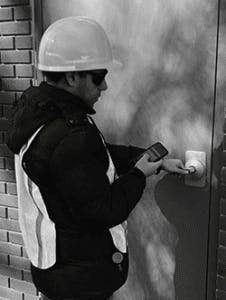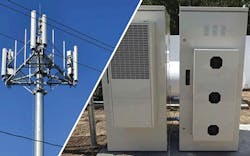Maintaining Safety and Network Resiliency During the COVID-19 Pandemic —
We all value and are committed to the health and safety of communications personnel in the field. Personal Protective Equipment (PPE), traditionally consisting of gear such as hardhats, safety glasses, work boots, gloves, and climbing equipment, is provided for protection. Now, with the COVID-19 crisis, we have added disposable gloves, masks, hand sanitizer, and physical distancing guidelines to the list.
Our rapidly changing environment, whether it is related to COVID-19, and possible impacts to our economy, civil unrest, 5G conspiracy theories, or other factors, have forced us to quickly learn and adapt. Staying informed and addressing health and safety issues are now even more critical and complex than ever.
InvisiLight® Solution for Deploying Fiber
April 2, 2022Go to Market Faster. Speed up Network Deployment
April 2, 2022Episode 10: Fiber Optic Closure Specs Explained…
April 1, 2022Food for Thought from Our 2022 ICT Visionaries
April 1, 2022Field technicians and network resiliency are experiencing increased threats and risks. These risks are in part a result of theft and vandalism as well as acts of violence against technicians at remote communications sites. This trend not only jeopardizes the lives and safety of technicians but can also result in site outages at a very important time for critical infrastructure stability.
To prevent acts of violence, workers need to remain aware of their surroundings. If they feel anyone is at risk while working, they need to reach out to their manager and make alternative arrangements. Personnel safety is always the priority.
Providing remote access control at sites is also a critical factor in protecting both personnel and critical communication assets. Security technology that is important to consider has the ability to provide keyless entry, remotely grant or revoke site access, provide time slots for access, and easily generate an access report of who, where, why, and when, a site was accessed.
Figure 2. Field tech access from smartphone.
The benefits of site security and remote access control from a smartphone or tablet cannot be understated as it also eliminates unnecessary site visits that, in the past, were required in order to share physical keys with other technicians at a site. With this new security technology, an approved technician’s mobile device can accept an encrypted digital key on demand without requiring physical key exchanges. This technology helps decrease exposure to risks related to violence, theft, and unnecessary physical contact with others. (See Figure 2.)
Furthermore, integrating remote access control with Network Operation Centers (NOC), door intrusion alarm systems, enterprise data, and workflow processes, results in removing unnecessary visits related to false door intrusion alarms.
• It also can enable the early detection and response to active theft and vandalism.
• Lastly, it can allow site tracking in order to provide employees with assistance at the site if needed.
Clearly, these capabilities demonstrate how field technicians can be safer and the network more stable.
According to Philip Ufkes, President of Security Enhancement Systems, "The demand for technicians to remotely manage access to sites has continued to increase as communications providers are experiencing safety issues, theft, and vandalism. They are also realizing the benefits of remote access control solutions as they are improving operational efficiencies and network uptime for their geographically dispersed sites."
Similar security systems can be used to protect various types of communications sites geographically dispersed throughout the world such as cabinets, generators, shrouds, smart poles, shelters, huts, gates, controlled environmental vaults, and other enclosures. (See Figure 1.) The increased physical security gained from robust electronic locking systems can reduce theft and vandalism, ultimately increasing network uptime.
Figure 1. Wireless telecommunications sites.
Remote access control systems must also operate during catastrophic events such as civil unrest and natural disasters when there is no service connectivity and many technicians require access to maintain network functionality. Network resiliency is not only critical for ensuring customer satisfaction, but it is also required by communication providers to comply with the Presidential Policy Directive 21 (PPD-21). This Directive outlines specific steps required for a safe site access control plan, and classifies safety procedures for communication’s critical infrastructure.
Like this Article?
Subscribe to ISE magazine and start receiving your FREE monthly copy today!
During these challenging times, as well as into the future, new security technology and other best practices help mitigate the risks to field technicians’ safety as well as to improve network resiliency regardless of where the site is located.
About the Author
Ernie Gallo
Director at Network Infrastructure Solutions, a division of Ericsson, Inc.,
Ernie Gallo is Director at Network Infrastructure Solutions, a division of Ericsson, Inc., and an IEEE C2 National Electrical Safety Code - Committee Member, Subcommittees SC2, SC4, SC5, and SC8. He has more than 40 years of experience in outside plant products, requirements, deployment, and electrical safety codes and standards such as the NEC and NESC. For more information, please email [email protected] or visit https://www.ericsson.com/en. Follow Ericsson on Twitter @ericsson.
For more information, please visit https://standards.ieee.org/products-programs/nesc/ to learn more information about the NESC and NESC Products. Follow the IEEE SA on Twitter @IEEESA. We welcome you to contribute to our efforts by joining the NESC.







